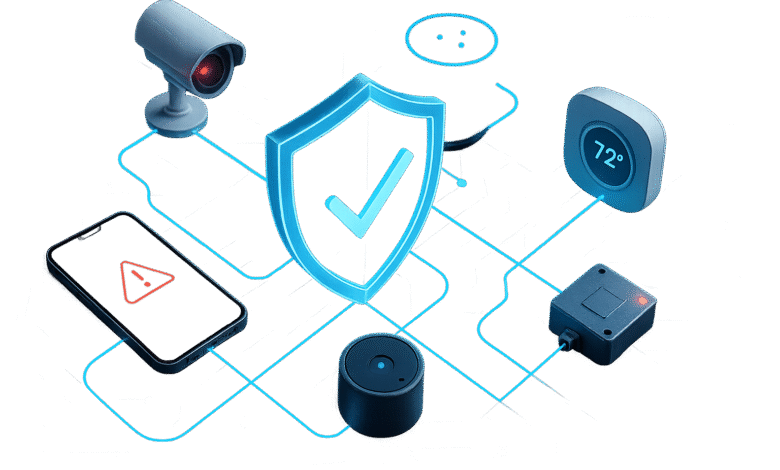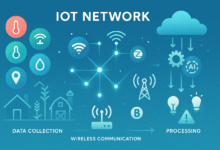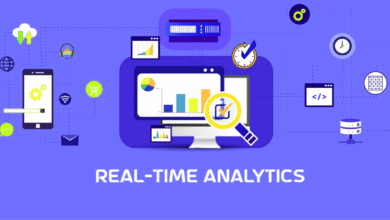
The Internet of Things (IoT) landscape has transformed dramatically, with over 18 billion connected devices now operating worldwide and projections reaching 40 billion by 2030. However, this explosive growth comes with unprecedented security challenges. Recent IoT breaches have exposed critical vulnerabilities that demand immediate attention from businesses, manufacturers, and security professionals.
The past year alone has witnessed devastating attacks that compromised millions of devices, from smart home systems to critical infrastructure. These incidents reveal a troubling pattern: while IoT technology continues advancing rapidly, IoT security measures lag dangerously behind. The consequences extend far beyond individual device compromises, creating cascading effects that can disrupt entire networks, expose sensitive data, and threaten public safety.
Understanding these recent breaches provides invaluable insights into the evolving threat landscape and emerging attack vectors. By examining what went wrong and why, organizations can better prepare for the future of IoT security and implement robust defenses against increasingly sophisticated cyber threats.
The Current State of IoT Security Vulnerabilities
Widespread Device Compromises
IoT security vulnerabilities have reached alarming levels, with research indicating that over 50% of connected devices contain critical flaws that hackers can exploit immediately. The scale of exposure became evident through several major incidents in 2024 and 2025.
The Mars Hydro breach stands as a prime example, where a massive misconfiguration exposed 2.7 billion IoT device records, including sensitive Wi-Fi credentials and device configurations. This incident highlighted how poor security practices can create enormous data exposures affecting millions of users globally.
Similarly, the Roku streaming service experienced two separate breaches within months, compromising over 590,000 user accounts. These attacks demonstrated how weak authentication mechanisms and inadequate access controls can leave even consumer-focused IoT platforms vulnerable to credential stuffing and unauthorized access.
The Rise of Sophisticated Attack Vectors
Recent breaches reveal that cybercriminals are evolving their tactics to exploit IoT vulnerabilities more effectively. Default passwords remain a primary attack vector, with attackers using automated tools to scan for devices still using factory credentials.
The infamous Mirai botnet continues spawning new variants, with the 2024 “Matrix” campaign demonstrating how attackers weaponize unpatched firmware and hardcoded credentials. These botnet attacks now originate from an estimated 35% of global DDoS incidents, utilizing millions of compromised cameras, routers, and sensors.
Supply chain attacks have also emerged as a significant threat. The XZ Backdoor discovered in early 2024 affected thousands of Linux-based IoT devices, showing how malicious code injected during manufacturing can create persistent, hard-to-detect vulnerabilities across entire product lines.
Major IoT Security Breaches of 2024-2025
Healthcare Sector Under Siege
Healthcare organizations faced unprecedented IoT cybersecurity challenges, with ransomware attacks targeting connected medical devices across multiple U.S. hospitals. Attackers gained control of patient monitoring systems, infusion pumps, and MRI machines, forcing facilities to revert to manual procedures.
These attacks exposed critical security gaps in medical IoT devices, including outdated security patches and insufficient network segmentation. The healthcare sector now experiences the highest breach costs at $11 million per incident, with IoT-related attacks increasing by 123% year-over-year.
The compromised medical devices created life-threatening situations where attackers could potentially manipulate medication dosages or disable critical monitoring equipment. This highlighted the urgent need for device authentication and robust security protocols in healthcare IoT networks.
Smart City Infrastructure Compromised
A major smart city in Asia suffered a devastating DDoS attack that crippled IoT systems responsible for transportation, utilities, and public safety. Traffic lights, surveillance cameras, and waste management systems went offline, creating widespread disruption and safety concerns.
The attack revealed vulnerabilities in outdated IoT protocols and weak authentication mechanisms. City officials struggled to restore services due to the interconnected nature of their connected devices, demonstrating how a single point of failure can cascade across entire urban infrastructures.
This incident underscored the critical importance of network security protocols and comprehensive IoT security frameworks for protecting public infrastructure that millions of citizens depend on daily.
Manufacturing and Industrial IoT Targets
European manufacturing plants experienced targeted cyberattacks that exploited vulnerabilities in Industrial IoT (IIoT) systems. Hackers manipulated machinery and halted production lines by taking advantage of weak communication protocols and outdated security measures.
Over 70% of manufacturers reported cyber incidents linked to IoT devices, with attackers capable of halting production, damaging equipment, and manipulating supply chains for profit. The manufacturing sector saw cyberattacks surge by 87%, making it one of the most targeted industries.
These breaches highlighted the risks of connecting legacy industrial systems to modern IoT networks without proper security considerations. The incidents cost affected companies millions in lost revenue and exposed the vulnerability of critical supply chain operations.
Consumer Smart Home Invasions
Thousands of consumers reported unauthorized access to their smart home devices, including locks, security cameras, and thermostats. Attackers exploited weak passwords and default settings to gain control over devices and breach privacy.
Voice assistants like Amazon Alexa and Google Assistant were hijacked through spoofed commands, allowing attackers to access private conversations, unlock doors, and manipulate connected devices remotely. This raised significant privacy concerns about smart device vulnerabilities.
The attacks demonstrated how improper configurations and poor security practices leave users exposed. Many victims discovered their devices were being used in botnet attacks against other targets, highlighting the broader implications of compromised consumer IoT equipment.
Key Lessons from Recent Security Incidents
The Default Password Problem Persists
Despite years of warnings, default passwords remain the most exploited vulnerability in IoT environments. Research shows that one in five devices continues shipping with factory-default login settings that are never changed.
The persistence of this issue stems from several factors: manufacturers prioritizing time-to-market over security, inadequate user education, and the absence of forced password changes during device setup. Automated scanning tools make it trivial for attackers to locate and compromise devices using known default credentials.
Organizations must implement policies requiring strong passwords and multi-factor authentication across all connected devices. This foundational security measure can prevent the majority of opportunistic attacks targeting IoT environments.
Firmware Updates Are Critical but Neglected
Unpatched firmware accounts for 60% of IoT security breaches, yet many organizations lack systematic processes for managing device updates. The challenge becomes particularly acute in distributed environments where hundreds or thousands of devices operate in remote locations.
The problem compounds when manufacturers discontinue support for older devices, leaving them permanently vulnerable to known exploits. Legacy devices often continue operating for years beyond their support windows, creating persistent security gaps.
Successful IoT security strategies must include automated firmware management systems and clear device lifecycle policies. Organizations need visibility into their entire device inventory and the ability to push security updates remotely.
Network Segmentation Saves Lives and Operations
Breaches repeatedly demonstrate that network segmentation can limit the scope and impact of IoT compromises. When medical devices, industrial controls, and administrative systems share network infrastructure, a single compromised device can threaten entire operations.
Effective segmentation isolates IoT devices from critical business systems while maintaining necessary communication channels. This approach prevents lateral movement by attackers and contains the damage from successful breaches.
Zero-trust network principles are becoming essential for IoT environments, where device identity verification and continuous monitoring replace assumptions about network security.
Emerging Threats and Attack Patterns
AI-Powered Attack Sophistication
Cybercriminals increasingly leverage artificial intelligence to enhance their IoT attacks. Machine learning algorithms help identify vulnerable devices faster and automate the exploitation process across massive device populations.
AI-enhanced malware can adapt to different device configurations and evade traditional security measures. These intelligent threats represent a significant escalation in the sophistication of IoT cybersecurity challenges.
Organizations must respond with AI-powered defensive systems that can detect and respond to these advanced threats in real-time. Traditional signature-based security approaches prove inadequate against adaptive attackers.
Supply Chain Vulnerabilities Expand
Supply chain attacks targeting IoT manufacturers have become more prevalent and sophisticated. Attackers inject malicious code during production, create backdoors in firmware, or compromise software dependencies used across multiple device lines.
These attacks can affect thousands of devices before discovery, creating widespread vulnerabilities that persist for years. The distributed nature of IoT supply chains makes detection and remediation particularly challenging.
Manufacturers must implement secure development practices, code signing, and comprehensive testing throughout their production processes. End users need tools to verify device integrity and detect unauthorized modifications.
Physical Security Becomes Digital Risk
The convergence of physical and digital security creates new attack vectors where IoT device compromises can have real-world consequences. Attackers can manipulate building systems, industrial controls, and safety mechanisms through digital means.
Recent incidents demonstrate how IoT vulnerabilities can be weaponized to cause physical damage or threaten human safety. Critical infrastructure sectors face particular risks where device compromises could affect power grids, water systems, or transportation networks.
Security strategies must account for these cyber-physical risks and implement safeguards that prevent digital attacks from causing physical harm.
Best Practices for IoT Security Implementation
Implementing Zero-Trust Architecture
Zero-trust security models assume that no device or user can be trusted by default, requiring continuous verification of identity and authorization. This approach proves particularly effective for IoT environments where device behavior can be monitored and anomalies detected.
Key components include:
- Device identity verification through digital certificates
- Continuous monitoring of device communications
- Granular access controls based on device function
- Real-time threat detection and response
Comprehensive Device Management
Effective IoT device security requires complete visibility into all connected devices and their security status. Organizations need asset inventory systems that automatically discover devices and assess their security posture.
Essential management capabilities include:
- Automated device discovery and classification
- Real-time security status monitoring
- Centralized firmware update management
- Policy enforcement across device types
Advanced Threat Detection
Modern IoT security solutions must detect both known and unknown threats through behavioral analysis and machine learning. Traditional antivirus approaches fail in IoT environments where devices lack the resources for complex security software.
Effective detection systems monitor:
- Network traffic patterns and anomalies
- Device behavior changes
- Communication protocol violations
- Unauthorized access attempts
Regulatory Compliance and Industry Standards
Evolving Regulatory Landscape
Governments worldwide are implementing stricter IoT security regulations in response to recent breaches. The EU Cyber Resilience Act, NIST IoT Cybersecurity Framework, and similar initiatives establish mandatory security requirements for connected devices.
Organizations must navigate compliance requirements that cover:
- Device security by design
- Vulnerability disclosure processes
- Data protection and privacy
- Incident reporting obligations
Industry-Specific Requirements
Different sectors face unique IoT cybersecurity challenges that require specialized approaches. Healthcare organizations must comply with HIPAA requirements, while critical infrastructure operators face additional national security considerations.
Sector-specific standards include:
- Healthcare: FDA cybersecurity guidelines for medical devices
- Automotive: ISO/SAE 21434 for vehicle cybersecurity
- Industrial: IEC 62443 for industrial automation systems
- Smart cities: NIST cybersecurity framework adaptations
Future-Proofing IoT Security Strategies
Quantum-Ready Security Measures
The emergence of quantum computing threatens current encryption methods used in IoT devices. Organizations must begin planning for quantum-resistant cryptography to protect long-lived IoT deployments.
Preparation steps include:
- Inventory of current cryptographic implementations
- Assessment of quantum vulnerability
- Migration planning for post-quantum algorithms
- Testing of quantum-resistant solutions
Automated Security Orchestration
As IoT networks continue expanding, manual security management becomes impossible. Automated orchestration platforms can manage security policies, respond to threats, and coordinate defenses across thousands of devices.
Automation capabilities should include:
- Policy deployment and enforcement
- Threat response and containment
- Security update distribution
- Compliance monitoring and reporting
The integration of security orchestration with AI and machine learning enables proactive threat hunting and predictive security measures that anticipate attacks before they occur.
According to the NIST Cybersecurity Framework, organizations should implement comprehensive risk management approaches that address the unique challenges of IoT environments. Additionally, the IoT Security Foundation provides valuable resources and frameworks for implementing effective IoT security measures across different industries and use cases.
Conclusion
Recent IoT security breaches have fundamentally reshaped our understanding of connected device vulnerabilities and the urgent need for comprehensive security strategies. From the Mars Hydro data exposure affecting billions of records to ransomware attacks crippling hospital medical devices, these incidents demonstrate that IoT cybersecurity can no longer be an afterthought in device design and deployment.
The lessons learned emphasize critical action items: eliminating default passwords, implementing systematic firmware update processes, and deploying robust network segmentation to contain breaches. As we move toward a future with 40 billion connected devices, organizations must embrace zero-trust architectures, automated threat detection, and quantum-ready security measures to stay ahead of increasingly sophisticated attackers.
The cost of inaction—measured in billions of dollars in damages, disrupted critical infrastructure, and compromised public safety—far exceeds the investment required to implement proper IoT security frameworks today.











